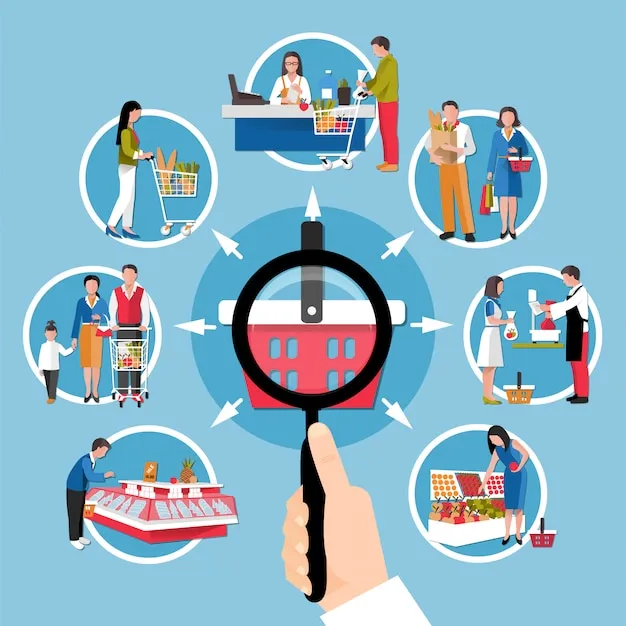Introduction
In today’s competitive business environment, understanding your customers is no longer a luxury—it’s a necessity. Companies that succeed are those that learn how to measure consumer lifestyles effectively. By analyzing lifestyle choices, spending habits, personal values, and day-to-day behaviors, brands can predict what consumers want and deliver products or services that truly meet their needs.
This guide will walk you through a detailed process of how to measure consumer lifestyles step by step. You’ll also discover proven tools, strategies, and real-world applications that help businesses design better marketing campaigns and build stronger relationships with their audiences.

- 10 Benefits of Maintaining an Active Lifestyle
- 7 Jobs That Will Evolve with AI by 2026
- The Creative Revolution: AI Impact on Human Imagination
- How to adapt your lifestyle after starting a new job
- What Is a Lifestyle Business and How Does It Work?
Why Measuring Consumer Lifestyles Matters
Lifestyle reflects not just what people buy but also why they buy it. From fashion to technology, consumer decisions are influenced by culture, interests, values, and income levels. Here’s why measuring consumer lifestyles is essential:
- It helps businesses target the right audience.
- It improves product design and development.
- It makes marketing campaigns more effective.
- It boosts customer engagement and loyalty.
- It identifies future market trends.
Step 1: Understand What “Lifestyle” Really Means
Before you can measure consumer lifestyles, you need to define it clearly. Lifestyle includes:
- Activities (how people spend time—work, hobbies, leisure)
- Interests (what people care about—fashion, travel, technology)
- Opinions (attitudes on politics, culture, or health)
- Values (ethical or spiritual beliefs guiding choices)
This is often summarized using the AIO Model: Activities, Interests, Opinions. Businesses that analyze AIO data can better understand their customers’ mindset.
Step 2: Collect Consumer Data
To measure consumer lifestyles effectively, you must collect both qualitative and quantitative data. Some proven methods include:
- Surveys & Questionnaires – Ask about hobbies, shopping habits, and personal interests.
- Focus Groups – Direct discussions that uncover deep insights.
- Purchase Data – Track consumer spending patterns.
- Social Media Monitoring – Analyze interests based on likes, shares, and comments.
- Website Analytics – Study online behavior such as browsing and time spent.
Data collection is the foundation of lifestyle measurement.
Step 3: Use Psychographic Segmentation
Demographics tell you who your customer is, but psychographics tell you why they buy. Psychographic segmentation divides customers based on:
- Values & Beliefs
- Motivations
- Attitudes
- Lifestyle Choices
For example, two customers of the same age may buy completely different products because of different lifestyle priorities. That’s why psychographics are essential in measuring consumer lifestyles.
Step 4: Apply the VALS Framework
One of the most recognized tools to measure consumer lifestyles is the VALS (Values and Lifestyles) framework. It categorizes people into eight groups:
- Innovators
- Thinkers
- Believers
- Achievers
- Strivers
- Experiencers
- Makers
- Survivors
By identifying which group your customers belong to, you can design targeted marketing strategies that align with their values.
Step 5: Leverage Technology for Lifestyle Measurement
Technology has revolutionized how we measure consumer lifestyles. Some advanced tools include:
- AI-based Analytics – Machine learning can predict behavior patterns.
- Big Data Analysis – Combines information from multiple sources for accuracy.
- Customer Relationship Management (CRM) – Stores lifestyle-related preferences.
- Wearable Devices – Provide insights into health and activity-related lifestyles.
This is where businesses can gain a real competitive advantage.
Step 6: Analyze Consumer Spending Patterns
One of the most direct ways to measure lifestyles is to analyze how people spend money. Spending patterns reveal:
- Preference for luxury vs. necessity
- Interest in sustainable and eco-friendly products
- Tendency to save vs. invest
- Online shopping vs. offline shopping
By studying these details, brands can position their products more effectively.
Step 7: Cultural & Social Influences
Lifestyle choices are deeply influenced by culture and society. For example:
- Western consumers may prioritize individualism and luxury.
- Asian consumers often emphasize family values and traditions.
- Urban youth may be driven by technology and global trends.
To measure consumer lifestyles effectively, businesses must factor in cultural differences.
Step 8: Tracking Lifestyle Shifts Over Time
Lifestyles aren’t static—they evolve with age, income, and social changes. For instance:
- Millennials once preferred fast fashion but are now leaning toward sustainability.
- Gen Z places high value on experiences rather than possessions.
- Post-pandemic consumers prefer digital and contactless options.
Tracking these lifestyle shifts helps businesses adapt quickly.
Step 9: Linking Lifestyle Data with Marketing Strategies
Once you have measured consumer lifestyles, the next step is applying that knowledge. Companies can use insights to:
- Design personalized ad campaigns.
- Launch products that align with consumer values.
- Improve customer experience both online and offline.
- Create loyalty programs targeting lifestyle preferences.
This is where lifestyle measurement translates into real profits.
Step 10: Case Studies of Lifestyle Measurement Success
- Nike measures consumer lifestyles by focusing on health, sports, and self-improvement. Their marketing speaks to active, performance-driven individuals.
- Apple targets tech-savvy, innovation-driven consumers who value creativity.
- Starbucks appeals to urban, experience-driven lifestyles with its coffee culture.
These companies demonstrate how lifestyle data creates brand loyalty.

Challenges in Measuring Consumer Lifestyles
While valuable, lifestyle measurement is not without challenges:
- Data privacy concerns limit the information you can collect.
- Consumer preferences change rapidly.
- Over-generalizing can lead to wrong conclusions.
- Cultural biases may skew results.
Overcoming these challenges requires continuous research and ethical practices.
Future of Measuring Consumer Lifestyles (Power Keyword – Next-Generation Insights)
The future of lifestyle measurement lies in next-generation insights powered by artificial intelligence, real-time data, and predictive analytics. Instead of relying on traditional surveys alone, businesses will use AI-driven platforms that track consumer decisions in real-time.
This approach will make lifestyle measurement faster, more accurate, and more personalized than ever before.
Conclusion
To stay competitive in today’s market, businesses must go beyond demographics and measure consumer lifestyles effectively. From using surveys and psychographics to applying VALS models and leveraging AI, lifestyle measurement opens doors to better marketing, improved products, and deeper customer relationships.
By adopting these strategies, you can gain a true understanding of your audience, predict future trends, and design business solutions that resonate with consumers on a personal level.








